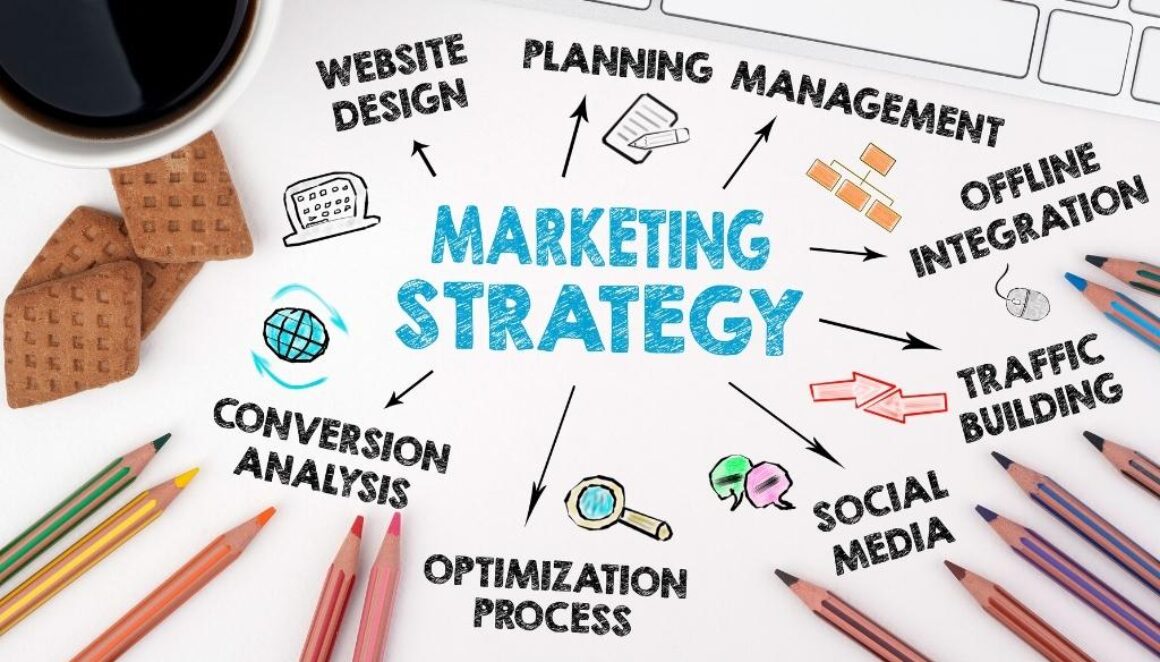Create An Effective SMB Marketing Strategy
Do you have a small- to medium-sized business (SMB)?
No matter what your business objectives are, you need an effective marketing strategy to achieve them.
81% of SMB owners credit the success of their business during the pandemic to their marketing strategy. 71% felt their marketing strategy was critical to the survival of their business.
Lets look at how you can create an effective SMB marketing strategy and measure its results against your business objectives.
What Is A Marketing Strategy?
A marketing strategy encompasses what your SMB needs to achieve specific business objectives through marketing.
This includes:
- Goals that you want your business to hit.
- Snapshots of your current business to compare KPIs at a later date.
- A clear definition of your target customers and where they’re located.
- Explanations of the steps behind getting your brand in front of your target audience.
- Plans to measure your marketing campaign performance against your snapshots.
- Ways to adjust your tactics accordingly.
Why Is A Marketing Strategy Important?
According to a survey conducted by CoSchedule, marketers that documented their strategy were 414% more likely to succeed in achieving their goals through marketing.
Marketing Strategy & Marketing Plan Difference
Your marketing plan exists within your marketing strategy, outlining the tactics that will be used to achieve your business objectives.
Set Goals For Your SMB
Before you can create a marketing strategy and begin outlining the tactics that your SMB will use, you have to set goals. What do you want to accomplish as part of your overall growth through marketing?
Most businesses want to increase revenue, so we’ll use that as an example.
While increasing revenue is a great place to start for SMB goal-setting, you must keep the rule of SMART goal-setting in mind. Your goals should be Specific, Measurable, Actionable, Relevant, and Timely. A great example of a SMART goal for SMBs is “increasing revenue by 33% by the end of the fourth quarter”.
This SMART goal allows you to break down specific needs to achieve this goal. Such as the number of additional:
- Customers you would need to generate this revenue.
- Leads you would need for your sales team to generate enough additional customers.
- Website visitors you would need from marketing to generate enough leads.
Now, you have a specific objective for your marketing strategy – to increase the number of website visitors to your website that are most likely to convert from visitor to lead and, ultimately, convert from a lead to a sale.
Create A Baseline
Before you begin running marketing campaigns, you need to document key metrics that will establish your baseline, or starting point. A baseline will allow you to determine which marketing tactics generate specific numbers, such as an increase in website visitors, callers, and leads.
For example, if your current marketing objective is to increase website traffic and generate more leads and you plan to run campaigns on multiple marketing channels, you need to know how many website visitors and leads you currently receive from each of those channels.
This allows you to create SMART goals and compare your success to where you began.
Determine The Best Tactics
Marketing tactics are generally broken down into digital and traditional marketing.
- Digital marketing employs digital channels to reach your target audience. This includes your website, search engines, social media networks, email, and online advertising.
- Traditional marketing employs offline channels to reach your target audience. This includes billboards, direct mail, radio, print, TV, and streaming services.
For most SMBs, it’s not a matter of which one to choose, but which ones. The right combination of digital and traditional marketing can ensure you reach your target audience in a way that cements your SMB as the best choice for the services you offer.
Select The Right Marketing Channels
Selecting the right marketing channels for your SMB can be a challenge because of the number of marketing and advertising channels available to SMBs.
It’s important to approach marketing on multiple channels to create touchpoints with your potential customers on the platforms they use most.
The following are just a few of the marketing channels used by SMBs to generate brand awareness, website traffic, and leads:
- Organic Search: SMBs can optimize their website to receive organic traffic from search engines like Google and Bing.
- Paid Search: In addition to organic search traffic, SMBs can pay for Google Ads and Bing Ads to appear on search engine results pages, resulting in website traffic, calls, and new leads.
- Local Business Profiles: SMBs targeting local customers can do so by creating a presence on Google Business Profiles, Yelp, and similar networks.
- Social Media: SMBs can use social media platforms like Facebook and Instagram to reach their target audience through organic posts and paid advertising.
- Billboard Ads: According to The Harris Poll, 82% of people notice billboard ads while driving. Build brand awareness in your local community and reach as many people as possible with billboard ads.
- Radio Ads: While some data shows an overall decline in radio listening, other research suggests that listeners with spending power are continuing to tune into AM/FM broadcasts. This makes it a great channel for local SMBs.
As you research marketing channels, consider whether your competitors use those channels and what kind of results they are achieving.
For example, if you have a law firm and you have seen a competitor on several billboards throughout your metro area for years, it’s safe to assume that billboard advertising may help your business attract clients. Your competitor wouldn’t pay for that particular channel for such a long term otherwise.
Measure The Effectiveness Of Your Marketing
Website analytics tools like Google Analytics can help you determine the source of your website traffic and attribute most of the leads you acquire from your website to specific marketing tactics, channels, and campaigns.
SMBs that want potential clients to call will need additional ways to track the success of marketing campaigns.
Call tracking software from CallRail allows SMBs to measure the effectiveness of online and offline marketing campaigns. CallRail can link calls, texts, form submissions, and live chats to the marketing channel they originated.
This allows SMBs to analyze each of the marketing channels they invest in to determine which ones result in the most cost-effective leads.
Learn More About Effective Marketing Strategy For SMBs
To learn more about creating an effective marketing strategy that helps your SMB generate qualified leads, reach out to The BLÜ Group and speak with one of our experienced team members about how we can help you form and implement an effective marketing strategy.
Source: SEJ




